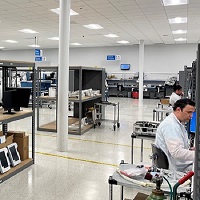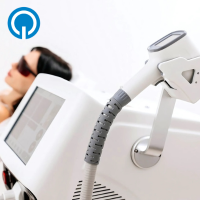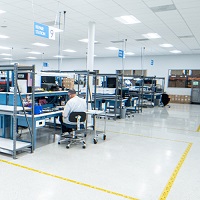
Internet of Medical Things: Monitoring & Management as a Service
Human Machine Interfaces (HMIs) are important and common tools used in the healthcare system. Oftentimes, Human Machine Interfaces are the point of failure of connected systems. How can you support the systems that make your healthcare technology interface with the teams that use them?
Let's dive in.
What if the software application monitoring inventory levels doesn’t let the hospital know that IV bags will run low in 5 days when there’s a 4-day turnaround on resupply? What if the software application residing on the laboratory refrigerator that tracks lifesaving regulated medicines crashes and doesn’t track the removal of one of the tubes when it is administered and missing a critical replenishment alert?
Lastly, what if the workflow software sitting in a customer’s IT infrastructure can’t communicate to the Laboratory Information System because the laboratory’s Internet Service Provider (ISP) or firewall failed, preventing blood sampling reports from being sent to doctors and the patients so desperately waiting for their lab results.
IT Connectivity and Performance Monitoring
Connectivity and data are becoming ubiquitous in modern-day devices. While manufactured devices have a specific purpose and function for markets served, there is a heavy interdependency on software applications and connectivity to ensure critical devices are operating optimally within their "IT Ecosystem."
Many devices have an Internet of Things "IoT" component that transmits device health diagnostic data, like system error codes, to remote care experts in real-time, this IoT data may not provide visibility into absconded IT Ecosystems in which many critical HMI applications reside.
IoT data is only one piece of the equation as much of the data produced from these devices is transferred into software applications humans use to create critical workflows that can be analyzed and diagnosed by healthcare professionals.
In many instances, Original Equipment Manufacturers (OEM) devices are controlled by applications and technology functioning through a Human Machine Interface (HMI) element. Failures within the HMIs consist of 3rd party hardware and software solutions, which typically go undetected given the lack of tools developed by manufacturers including:
Hardware
Software
Degradation in the HMI's can become a single point of failure for a solution's overall health, this leads customers to assume the underlying OEM medical technology is unreliable.
Most customers assume the underlying OEM medical technology is unreliable when in fact, these OEMs are reliant on customer-provided infrastructure and have limited to no control over the reliability of the environment hosting the OEM’s application and solution.
Quest's Connectivity and Performance Monitoring solutions are easily installed on systems running critical applications, monitoring software applications, dependent services (databases, web servers, core processes), hardware performance metrics, and IT connectivity elements which may be outside the purview of many OEMs.
Quest’s solution ensures that the IT Ecosystem of a device is connected and performing optimally. Quest's Connectivity and Performance monitoring tools are custom "branded" and accomplish the following:
Implementation of Quest’s IT connectivity and performance monitoring solutions within a “Customer Care” strategy ensures visibility into the health of a global install base. It demonstrates Quest’s proactive response to critical issues within a customer's environment, ensuring maximum uptime.
Cultivating a proper Customer Care plan is an important aspect to consider. The right support desk helps support customer calls, digital S.O.S., training, IT Connectivity, and Performance Monitoring solutions.
Read more on the “Customer Care” solutions we offer at Quest, and why we think they are so important for your company here
MAR-872 REV 1.0











